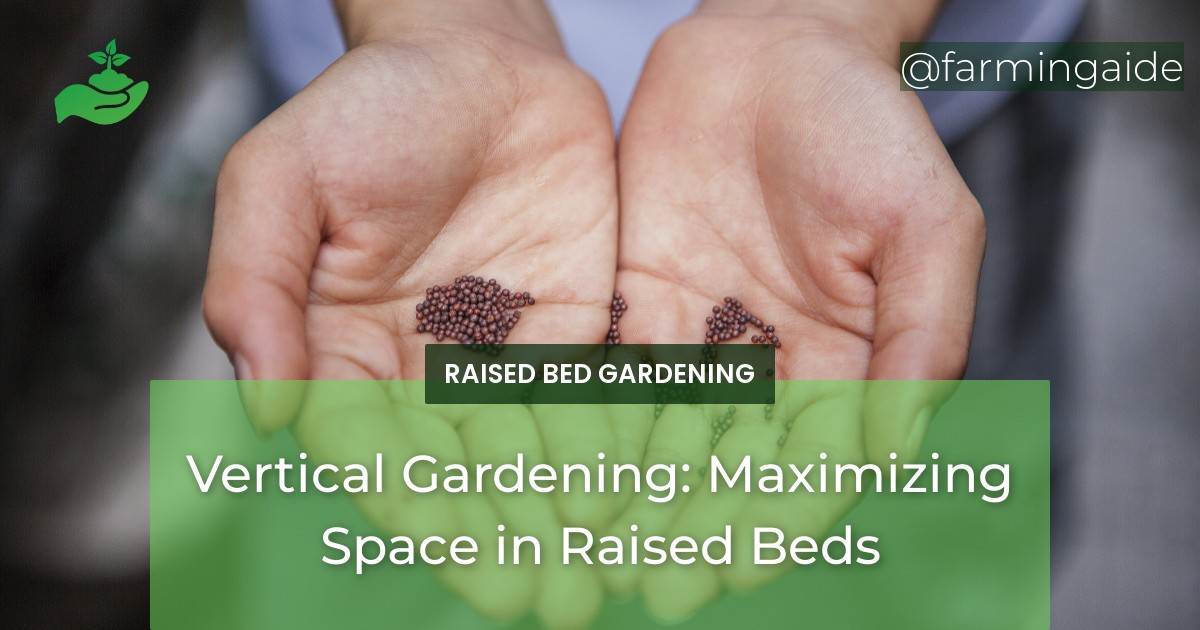If you are looking for a space-saving solution for your garden, vertical gardening is an excellent option. It is a great way to utilize limited space and grow more plants without taking up too much horizontal space. In this article, we will discuss everything you need to know about vertical gardening in raised beds, including the advantages, suitable plants, trellis structures, and maintenance tips.
Advantages of Vertical Gardening
Vertical gardening has many advantages over traditional gardening methods. Here are some benefits you can expect:
Space-Saving Solution
Vertical gardening maximizes your available space. You can grow more plants in a smaller area, making it ideal for small gardens, balconies, and patios. You don’t need to worry about having a large backyard to enjoy the benefits of gardening.
Healthier Plants
Vertical gardening promotes better air circulation around your plants. It also helps to prevent soil-borne diseases and pests from attacking your plants, resulting in healthier plants and a better harvest.
Easier Harvesting
With vertical gardening, you can save time and energy by harvesting your plants without having to bend or kneel down. This makes it ideal for gardeners with physical limitations or disabilities.
Beautifies Your Space
vertical gardening adds a beautiful touch to any space. It can create a natural privacy screen, a green backdrop, or a focal point in your garden. It is perfect for creating a cozy and inviting atmosphere in your outdoor space.
Improves Air Quality
vertical gardening helps to absorb carbon dioxide and other pollutants from the air, resulting in cleaner air. This is especially beneficial if you live in the city or a polluted area.
Choosing Suitable Plants for Vertical Growth
Not all plants are suitable for vertical gardening. Here are some plants that thrive in a vertical environment:
Vines and Climbers
Tomatoes
Cucumbers
Pumpkins
Grapes
Green Beans
Herbs
Basil
Oregano
Mint
Parsley
Thyme
Vegetables
Lettuce
Spinach
Kale
Radishes
Carrots
Flowers
Petunias
Marigolds
Geraniums
Sunflowers
Nasturtiums
ALSO READ
Creative Trellis and Support Structures
There are several trellis and support structures you can use for your vertical garden. Here are some creative ideas:
Trellis Netting
Trellis netting is a lightweight and affordable option for vertical gardening. It works well for supporting vines and climbers and can be easily attached to your raised bed.
Bamboo Poles
Bamboo poles are an eco-friendly option for supporting your plants. They are sturdy and can be easily cut to the desired length.
Wire Mesh Panels
Wire mesh panels are a durable and versatile option for vertical gardening. They can be easily attached to your raised bed and are perfect for supporting heavy plants.
PVC Pipes
PVC pipes are a cost-effective option for creating a trellis structure. They are available in various sizes and can be easily cut to the desired length.
Upcycled Materials
You can also use upcycled materials such as pallets, ladders, and old window frames to create a unique trellis structure. Not only are you helping the environment, but you are also creating a one-of-a-kind garden.
Tips for Successful Vertical Gardening in Raised Beds
Vertical gardening requires proper planning and maintenance to ensure success. Here are some tips to get you started:
Watering Techniques
Plants grown vertically require adequate watering. Make sure to water your plants regularly to prevent them from drying out.
Soil Mixtures
Use a high-quality soil mixture that is rich in nutrients and well-draining. Consider adding compost and organic matter to improve soil fertility.
Fertilizers and Compost
Plants grown vertically require more nutrients than plants grown horizontally. Use a high-quality fertilizer and compost to boost plant growth and improve soil health.
Sunlight and Shade Requirements
Consider the sunlight and shade requirements of your plants when planning your vertical garden. Some plants require full sun, while others prefer partial shade.
Pest and Disease Control
Prevent pests and diseases from attacking your plants by keeping them healthy and using organic pest control methods.
DIY Vertical Garden Projects for Raised Beds
If you are feeling creative, you can create your own unique vertical garden projects. Here are some DIY ideas:
Hanging Gutter Garden
Create a hanging garden using gutters and attach them to your raised bed for a stunning display.
Pallet Planter
Transform a pallet into a vertical planter by attaching pots or planting directly into the pallet.
Shoe Organizer Garden
Reuse an old shoe organizer by filling each pocket with soil and planting your favorite herbs or flowers.
Succulent Wall Planter
Create a living wall using succulents for a low-maintenance and beautiful display.
Bookshelf Garden
Transform an old bookshelf into a vertical garden by adding pots or planting directly into the shelves.
Maintenance and Care for Vertical Gardens
Vertical gardens require regular maintenance and care to ensure healthy plant growth. Here are some tips:
Regular Pruning and Trimming
Prune and trim your plants regularly to promote healthy growth and prevent them from becoming too heavy and falling over.
Proper Support Maintenance
Check your trellis and support structures regularly to ensure they are sturdy and can hold the weight of your plants.
Soil and Fertilizer Maintenance
Monitor your soil and fertilizer levels regularly to ensure your plants are getting the nutrients they need to thrive.
Pest and Disease Prevention
Prevent pests and diseases by using organic pest control methods and keeping your plants healthy.
Seasonal Changes and Adjustments
Make adjustments to your vertical garden as the seasons change. Consider changing your plants based on the season and adjusting your watering and fertilizing schedule.
Conclusion
Vertical gardening in raised beds is a space-saving solution for gardeners with limited space. It promotes healthier plants, easier harvesting, and beautifies your outdoor space. By choosing suitable plants, using creative trellis structures, and following proper maintenance tips, you can enjoy a successful vertical garden. So, what are you waiting for? Start your own vertical garden today!
RELATED ARTICLES:


